To the untrained eye, the red shipping container at Felixstowe looked no different to the thousands of others stacked up at Britain’s busiest seaport.
Destined for Africa, its contents were listed as “household goods,” but to police officer Adam Gibson, something didn’t add up. So workers broke into the container.
Gibson was right. Inside were four sport utility vehicles—three Toyota RAV4s and a Lexus RX 450h. Two were on the ground and the others were dangling from the roof, squeezed in like Tetris blocks.
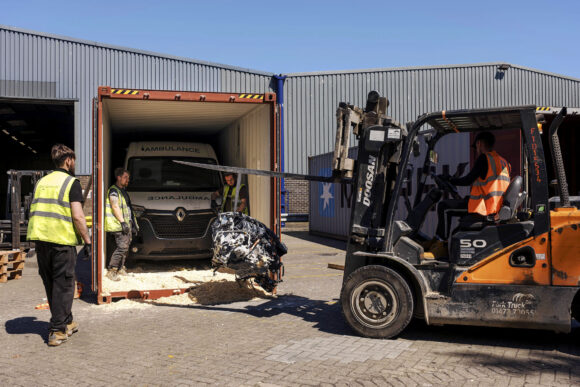
After they were lifted out on a forklift, Gibson ran checks. The cars were all stolen and their license plates had been changed.
Car theft is a growing problem in the UK. Almost 130,000 vehicles were stolen in the year ending March 2024—near a 15-year high—costing insurers £640 million ($867 million), according to the most recent data. And at least some of them are ending up overseas. As one of the few specialist officers at the National Vehicle Crime Intelligence Service (NaVCIS), an industry-funded police unit focused on car-related crime, Gibson’s job is to scour containers and keep stolen cars from leaving the country.
The thieves he’s up against are not just opportunists or joyriders. Most vehicle theft nowadays is orchestrated by organized gangs cashing in on overseas demand for SUVs. And with numbers climbing, police have struggled to stop it: for each stolen car Gibson and his colleagues intercept, he estimates that another nine slip through their fingers.
“It’s not amateurs that are playing at this,” Gibson said. “This is proper business.”
As cars have become increasingly high-tech, a technological arms race has also kicked off between manufacturers and thieves. Data from the Office for National Statistics shows that 58% of vehicle thefts in England and Wales in the year ending April 2024 happened with the help of “signal-jammers”—electronic tools capable of disrupting remote locking devices. That was up from 40% the previous year. Toyota, which also owns Lexus, said theft in recent years had reached “almost epidemic proportion in the UK.”
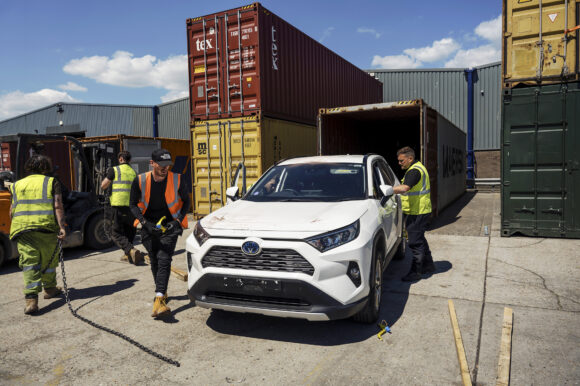
In response, carmakers have introduced keyless technology that “goes to sleep” when not in use, trackers to keep tabs on a stolen vehicle’s location and other security measures. Toyota said it’s invested millions in combatting signal jammers, which can cost as much as £30,000 apiece. Jaguar Land Rover, whose luxury SUVs are so attractive to thieves that insurance companies have been reluctant to cover them, recently rolled out a software upgrade for some models that makes it impossible to drive a car without having its keys.
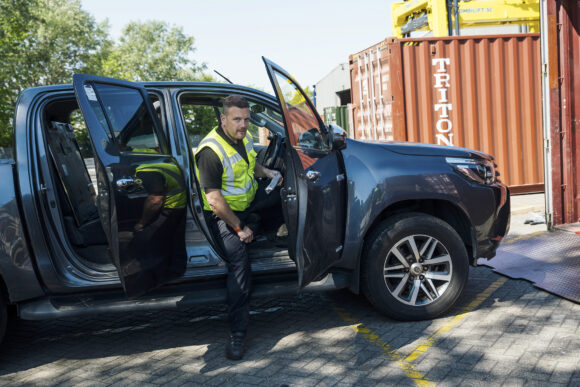
“It’s like a game of tennis,” Gibson said. “Criminals come out with a new bit of kit, manufacturers will get round it, sometimes by buying it on the dark web and reverse-engineering it. But five minutes later, once they’ve stopped it, they’ve come out with a new bit of kit.”
By the time a stolen car arrives at a port, owners have usually already filed a claim with insurers, which tend to quickly write off a vehicle and pay up. Those hoping to recover their cars, however, stand the best chance of doing so while they’re still in the UK. Even if trackers do locate the vehicle abroad, it can be difficult to get a foreign country’s authorities to collaborate, and repatriation costs are not cheap.
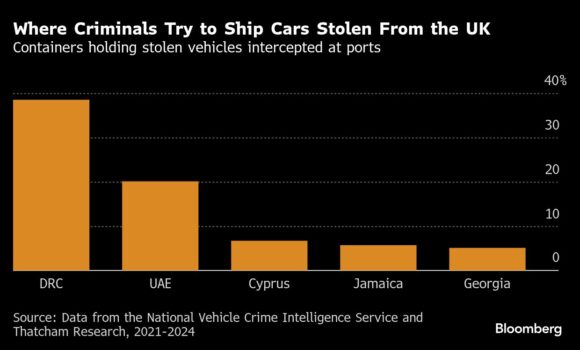
At Felixstowe, Gibson relies on intuition and red flags to spot suspicious shipments. A container registered to a person associated with previous criminal activity might set off an alarm, for instance, as would a container that’s heavier or lighter than its listed contents suggest. Yet with around 60,000 containers moving through UK ports every day, gangs exploit the fact that the vast majority of them will never be checked. “They know there’s a very slim chance of actually being caught,” said Simon Hurr, a vehicle security expert at Ford. And among those who were caught and charged with vehicle theft between 2022 and 2023, the conviction rate was just 2%.
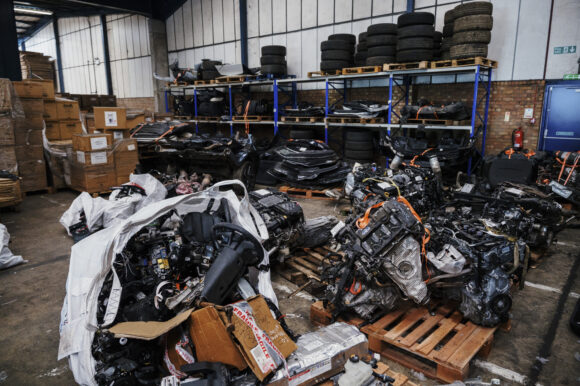
Alongside Gibson, NaVCIS employs just two other patrol officers to cover four ports in the south of England, and about nine additional office staff. After the Home Office cut support for the agency, it has relied entirely on private funding—primarily from the Finance & Leasing Association, the trade body for motor finance—to cover its costs.
As car theft has become more organized, however, “policing hasn’t kept pace,” said Mark Kameen, project lead for the recently established National Vehicle Crime Reduction Partnership (NVCRP). The joint initiative, put together by police, the Home Office and automakers like JLR and Toyota, helps coordinate the response to vehicle thefts, including by organizing raids on gangs.
While owners are compensated when their cars are taken, vehicle theft isn’t a victimless crime. The more cars are stolen, the more insurance premiums go up. In the first three months of the year, British car owners were quoted an average of almost £800 a year for insurance—down from a peak 18 months ago but still far higher than the historical average.
The government has taken steps to crack down on car theft. As well as helping set up and fund the NVCRP, it proposed measures in February that would impose a maximum sentence of five years in prison on anyone in possession of a signal jammer.
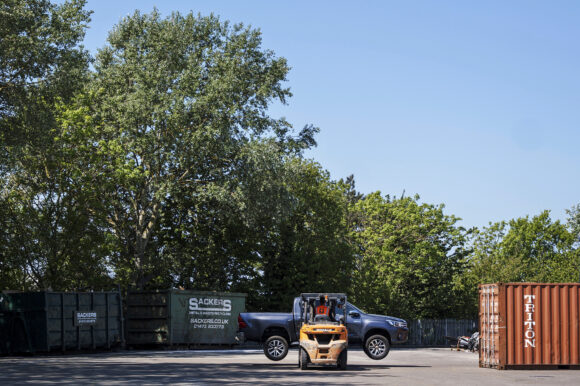
Carmakers are also starting to see their own efforts pay off. JLR said the theft rate of its vehicles has fallen by over 50% since it introduced new security measures in November 2022, and that fewer than four out of every 1,000 of its new cars are stolen. Toyota carried out its own trial last year, fitting some cars with tracking systems. Of those that went missing, 96% were recovered thanks to the trackers, the company said. It now plans to roll them out in certain models as an optional feature.
These changes have also had ripple effects on the black market, according to Gibson. While SUVs are still most in demand, he’s noticed a move away from luxury vehicles. “Five years ago, it was Range Rovers, BMW X5s, high-end Mercedes. In the last two or three years, we’ve started to see Hyundais, Kias and Toyotas.”
Cutting open his final container after a busy day at Felixstowe, Gibson discovers a mess of valuable car parts alongside a more curious item: a London ambulance that he suspects is on its way to Ukraine. It’s hauled out with a forklift, revealing chopped-up cars stuffed in back of the container that can be sold on for parts. More valuable components are crammed into the ambulance to make use of the space. Gibson’s work here is finished. What happens next is up to the insurer.
Top photograph: A shipping container holding a stolen Toyota RAV 4, discovered by police at the Port of Felixstowe, UK, on May 21, 2025. Photo credit: Jose Sarmento Matos/Bloomberg
Related:
Topics InsurTech Auto Fraud Tech Manufacturing
Was this article valuable?
Here are more articles you may enjoy.


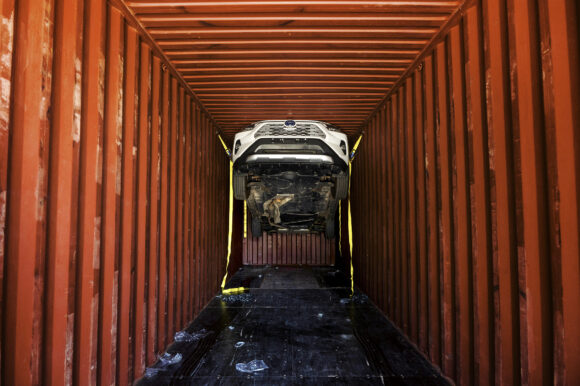
 Best Quarter in a Quarter Century, Says S&P Q3 Analysis of US P/C
Best Quarter in a Quarter Century, Says S&P Q3 Analysis of US P/C  Taiping Insurance Shares Hit by Over $200 Million Exposure to Hong Kong Fire
Taiping Insurance Shares Hit by Over $200 Million Exposure to Hong Kong Fire  How ‘Super Roofs’ Reward Insurers, Cat Bond Investors and Homeowners
How ‘Super Roofs’ Reward Insurers, Cat Bond Investors and Homeowners  Death of Teenager on Carnival Cruise Ship Ruled a Homicide
Death of Teenager on Carnival Cruise Ship Ruled a Homicide 

